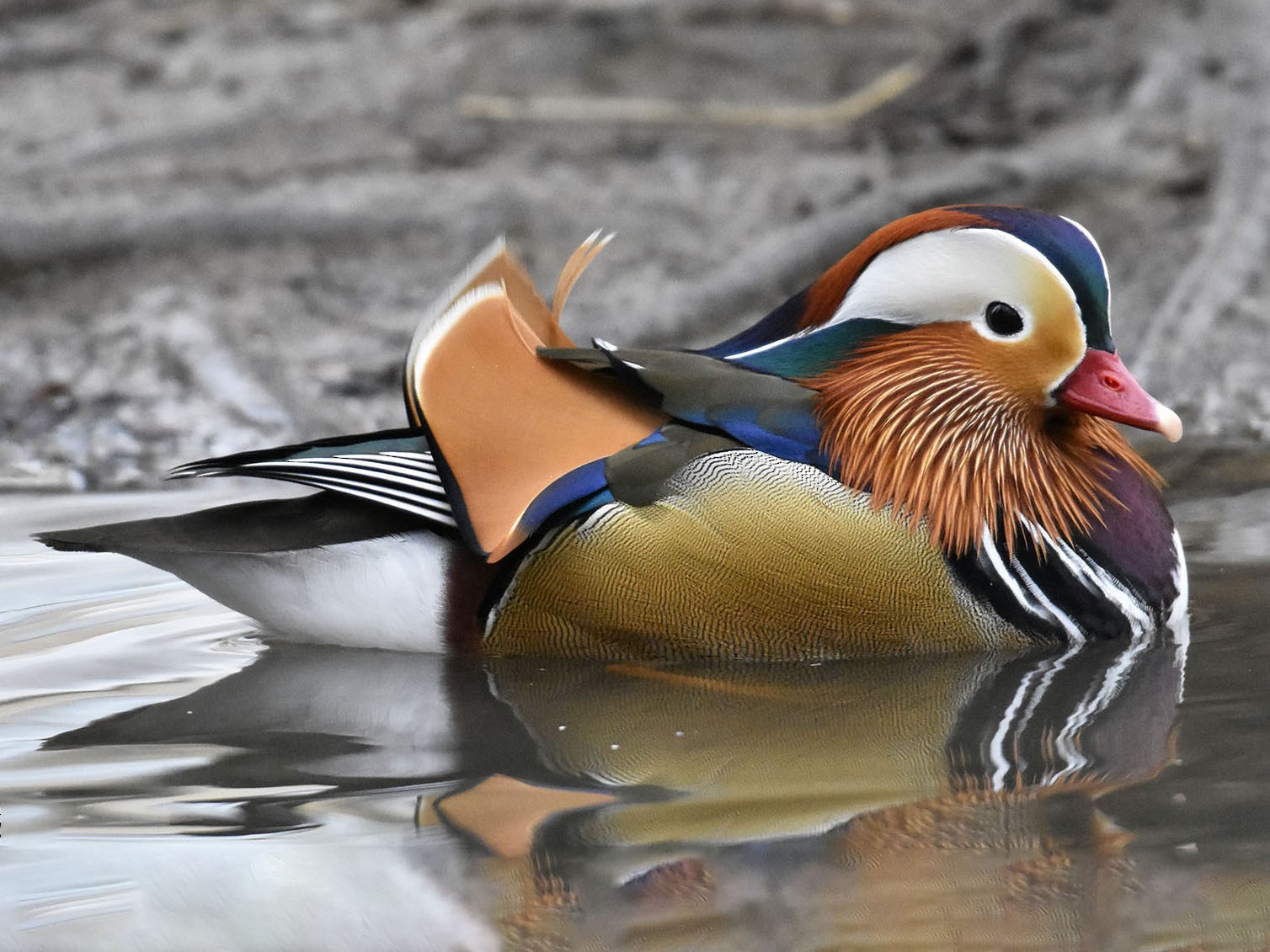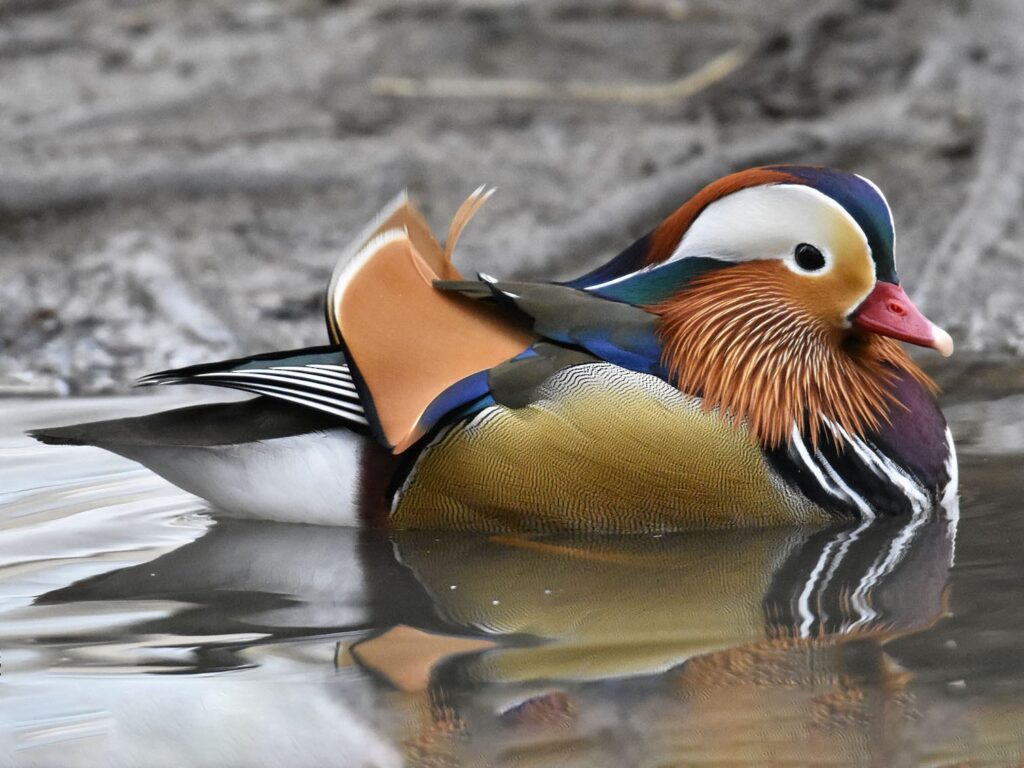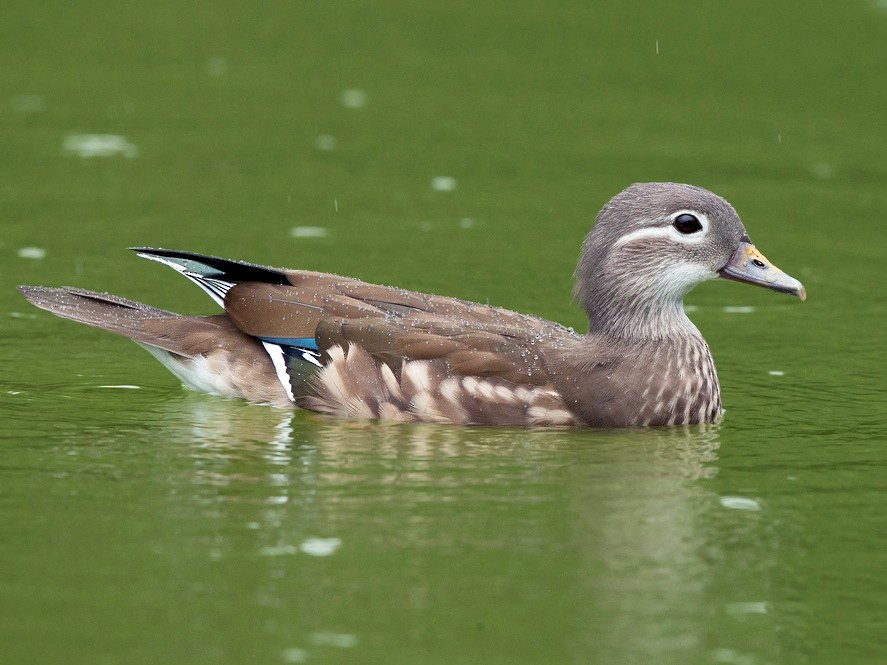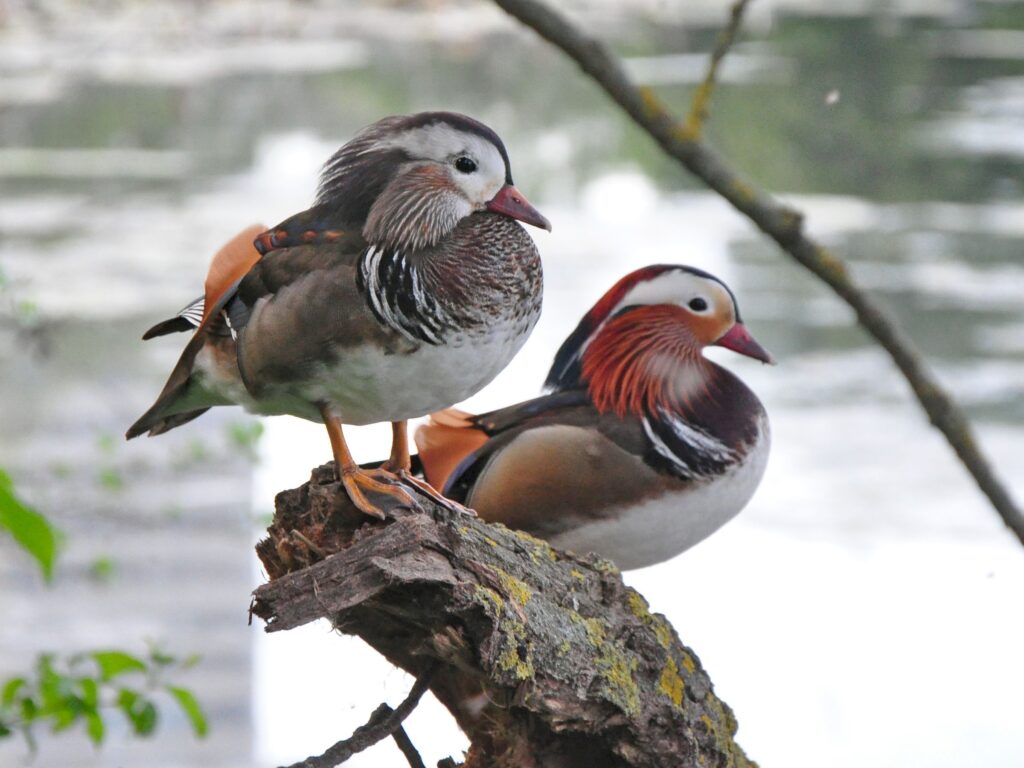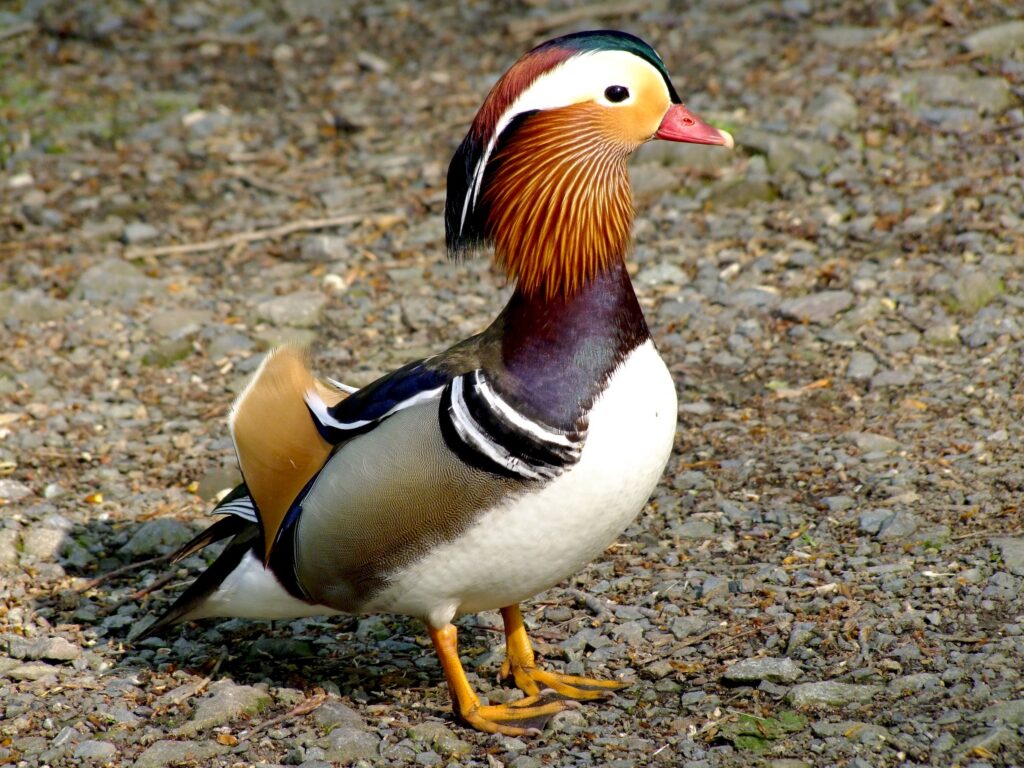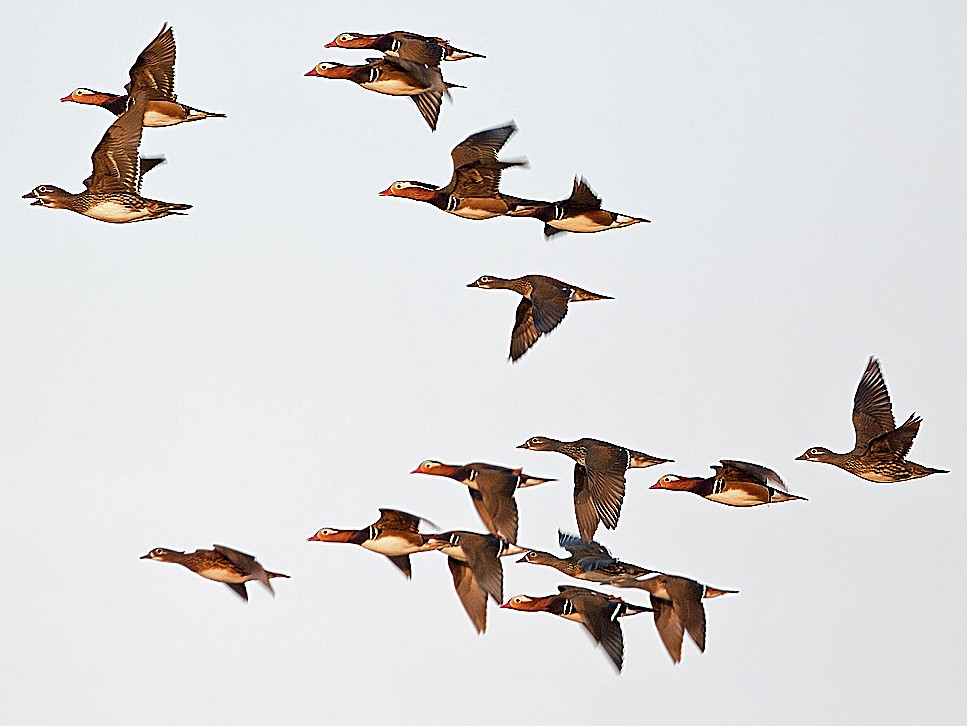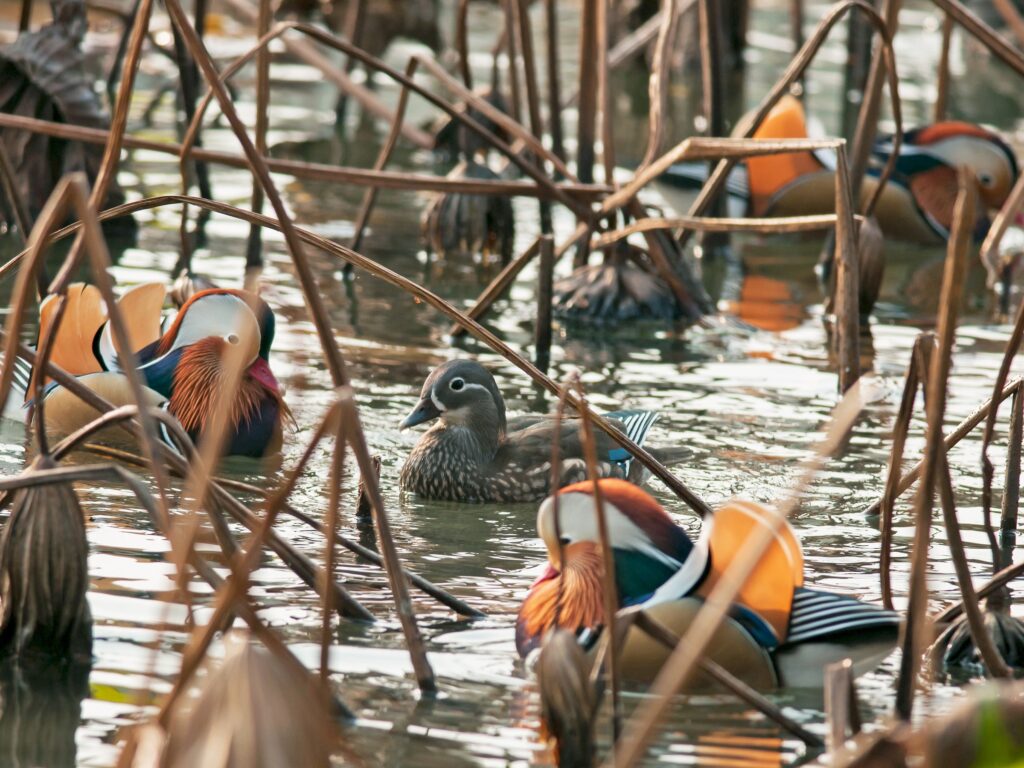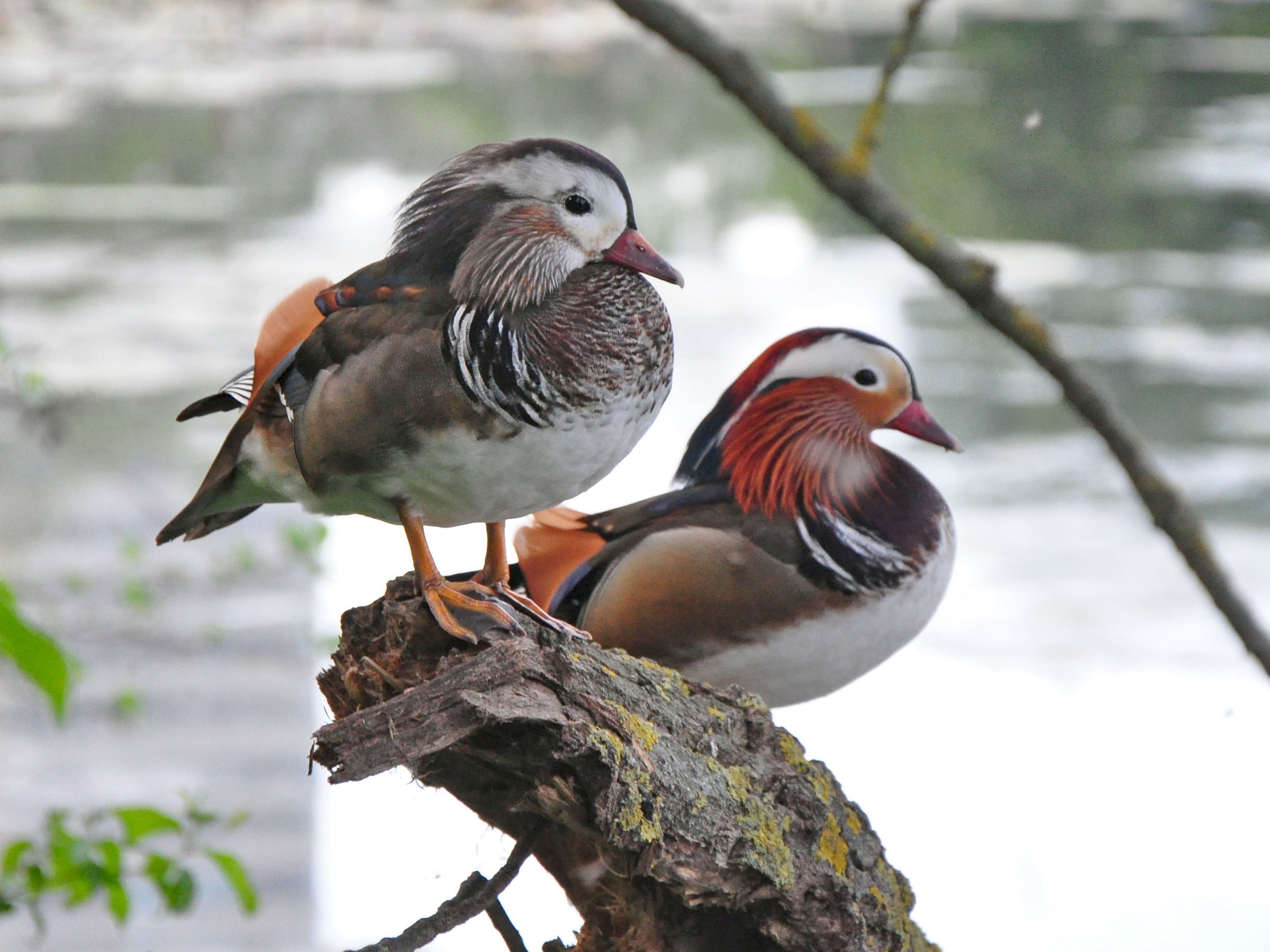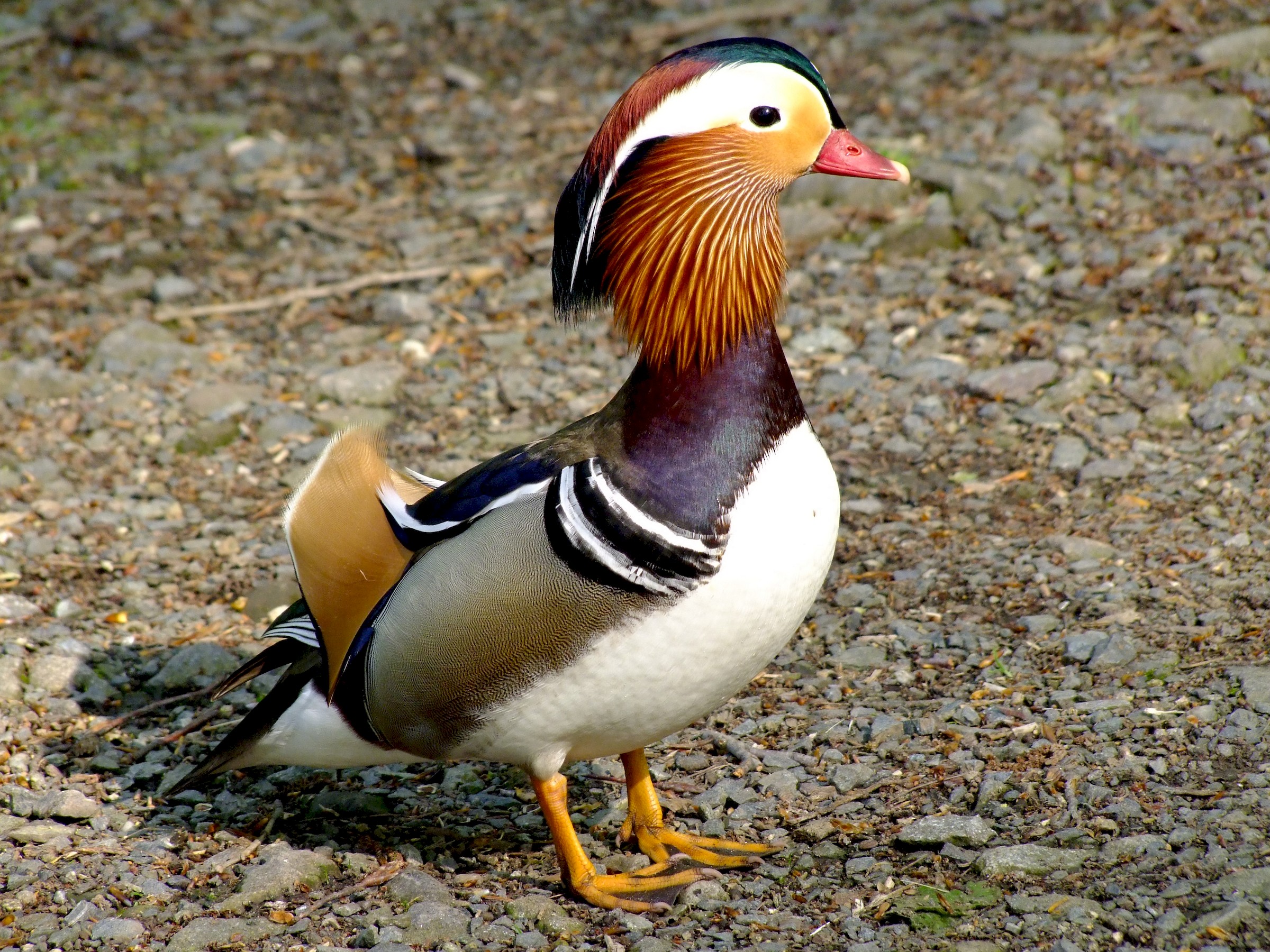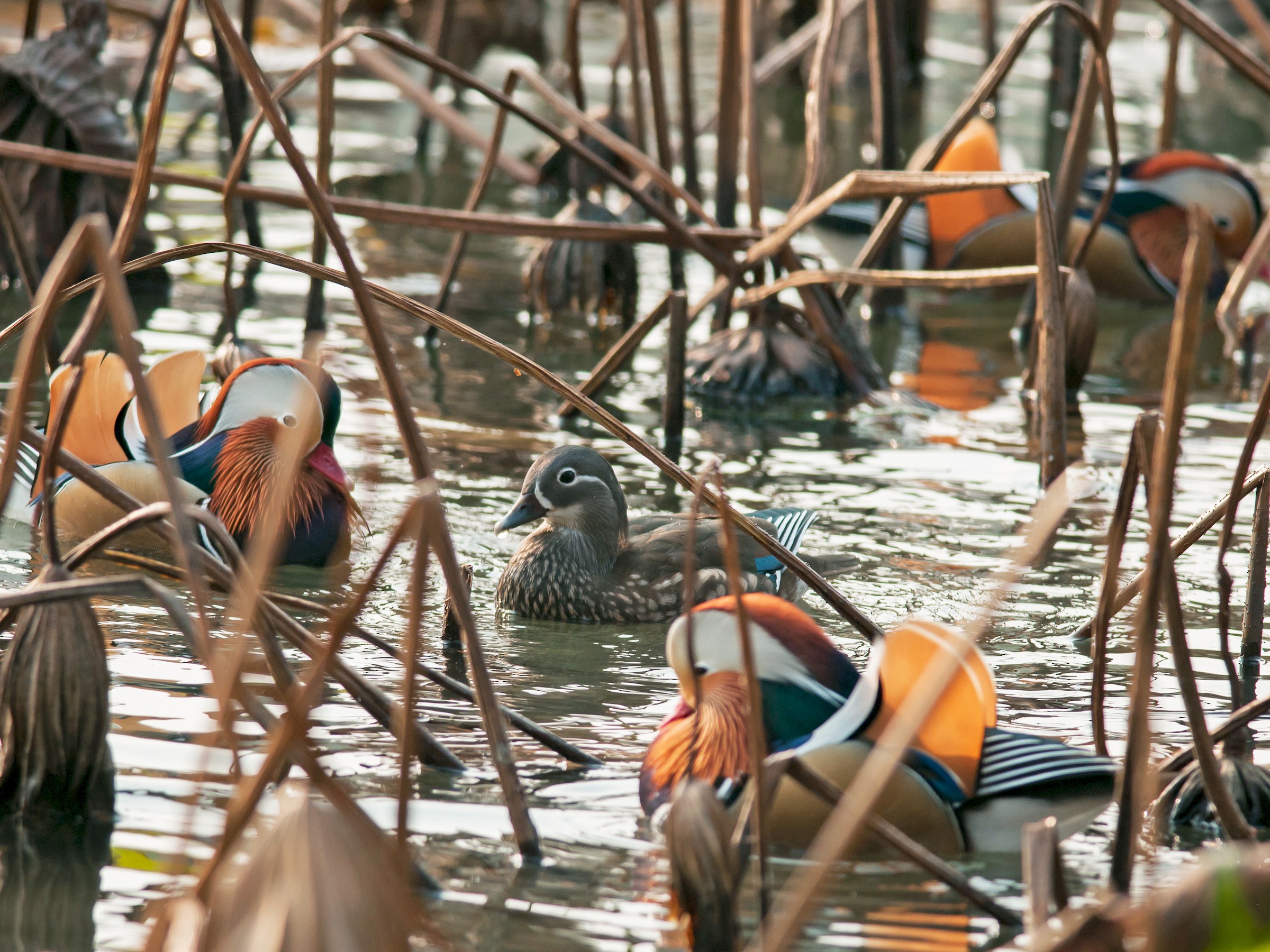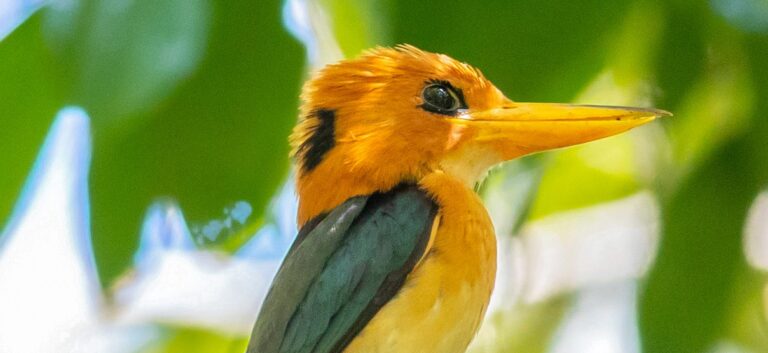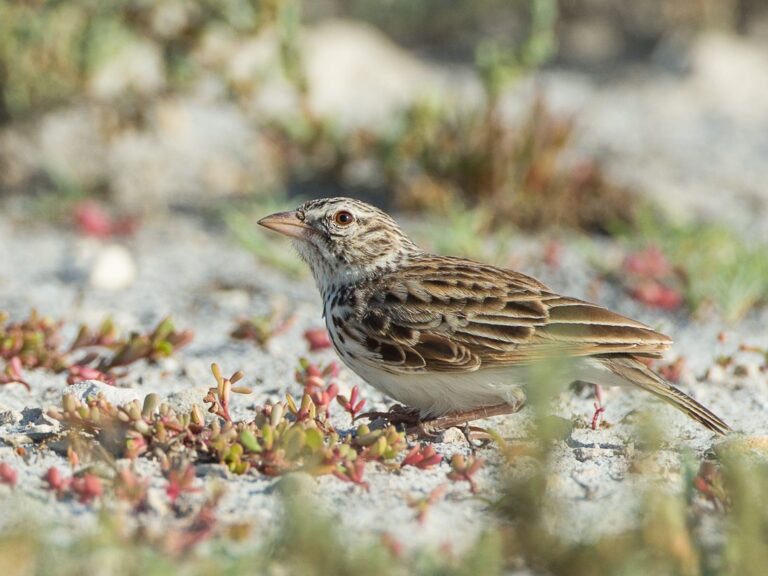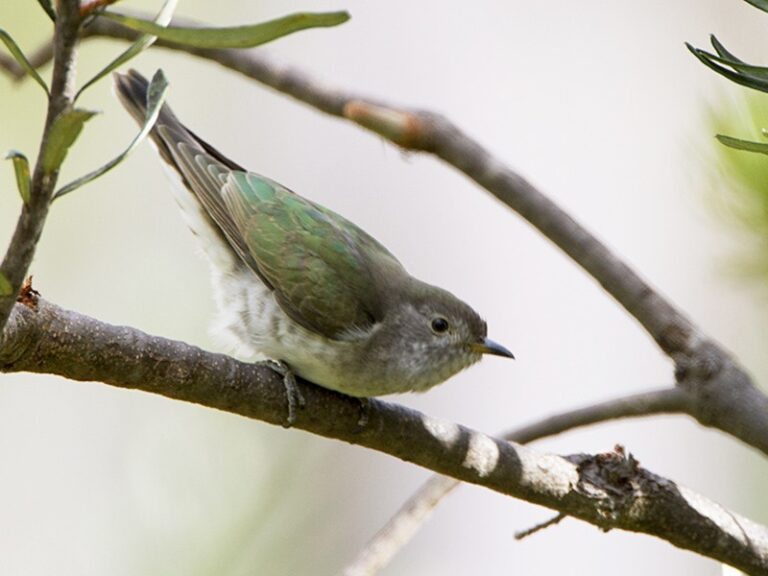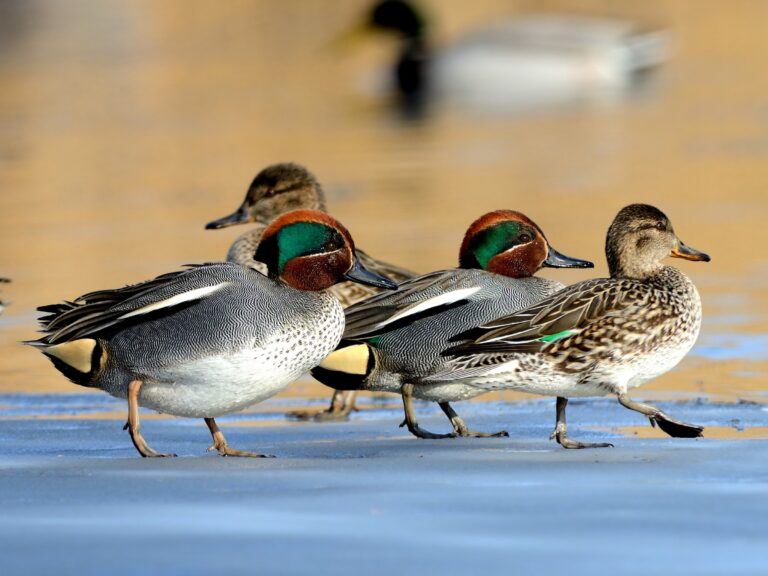Mandarin Duck: The Stunning Avian Marvel of Colorful Elegance
The Mandarin Duck, known scientifically as Aix galericulata, captivates birdwatchers and nature lovers alike with its striking colors and unique patterns. This species is not only admired for its beauty but also holds cultural significance as a symbol of love and fidelity. Found in East Asia and in various parts of Europe, the Mandarin Duck thrives in wooded lakes and rivers. Understanding its behavior, habitat and vocalizations can deepen appreciation for this remarkable bird.
Reproduction plays a crucial role in the lifecycle of the Mandarin Duck, as these birds are known for their elaborate courtship displays. They typically build their nests in tree cavities, demonstrating their adaptability to different environments. With a diet that includes a mix of seeds, fruits, and insects, these ducks show a diverse feeding behavior that helps them thrive in the wild.
Conservation efforts are essential to protect the Mandarin Duck, as it faces threats from habitat loss and environmental changes. Observing these ducks in their natural habitat can provide valuable insights into their behaviors and interactions. As more people become aware of the Mandarin Duck and its significance, the hope is to foster greater interest in wildlife preservation.
Key Takeaways
- The Mandarin Duck is a symbol of love and fidelity in various cultures.
- It primarily inhabits wooded areas near lakes and rivers.
- Conservation efforts are vital to ensure the survival of this beautiful species.
Species Overview
The Mandarin Duck is a striking bird known for its vibrant colors and unique features. This section highlights its physical description and taxonomic classification, providing important insights into this species.
Physical Description
The Mandarin Duck (Aix galericulata) is notable for its stunning plumage. The male displays a mix of bright orange, green, and white, making it easily recognizable. It has a large, broad head and a distinctive crest.
In contrast, female Mandarin Ducks have a more subdued coloration, primarily gray with white accents. Both sexes have a characteristic “tear stripe” running from the eye to the back of the head.
In terms of size, Mandarin Ducks are medium-sized, measuring about 19 to 21 inches in length. Their size is similar to that of the North American Wood Duck, which adds to their appeal among waterfowl enthusiasts.
Taxonomy and Nomenclature
The Mandarin Duck belongs to the family Anatidae, which includes all ducks, geese, and swans. Its scientific classification places it in the genus Aix. The genus name comes from the Latin word for “waterbird,” reflecting its aquatic habitat.
The Mandarin Duck is often confused with other species due to its striking appearance. Its close relation to the North American Wood Duck (Aix sponsa) is notable, as both share similar habitats and behaviors.
Understanding its classification helps in conservation efforts, as this species has faced threats in various regions. Efforts are ongoing to protect and preserve the Mandarin Duck and its natural habitats.
Habitat and Distribution
The Mandarin Duck is known for its striking appearance and preferred environments. This section will explore its geographical range and habitat preferences in detail.
Geographical Range
Mandarin Ducks primarily inhabit East Asia, with significant populations found in China, Japan, Korea, and Russia. In recent years, they have also been spotted in various parts of Europe, such as the Netherlands.
The extent of their range can vary with the seasons. During migration, these ducks can travel farther in search of suitable habitats. Their movement patterns are influenced by weather changes and food availability.
Habitat Preferences
Mandarin Ducks prefer habitats near freshwater sources like ponds, lakes, and slow-moving rivers. They thrive in regions that offer plenty of vegetation for cover, such as reeds and tall grasses.
These ducks are also known to inhabit mountainous areas, seeking out forested regions near water. The ideal environment provides both food and safety from predators.
In urban settings, Mandarin Ducks have adapted to man-made lakes and parks, showing flexibility in their habitat choices. This adaptability helps them maintain stable populations despite habitat changes over time.
Reproduction and Lifespan
Mandarin Ducks have specific breeding habits and a notable growth and development process for their young. Understanding these aspects helps illustrate their reproductive strategies and the lifecycle of this unique bird.
Breeding Habits
Mandarin Ducks typically breed once a year during the spring season. The breeding season can vary based on geographical location but generally begins in March and lasts until June.
A female will select a nesting site, often in tree cavities or dense shrubs near water.
She lays about 8 to 12 eggs, which are usually cream or pale yellow in color.
After laying the eggs, the female incubates them for about 28 to 30 days. Once hatched, the ducklings are precocial, meaning they can walk and swim almost immediately.
Growth and Development
Ducklings grow rapidly after hatching. They leave the nest shortly after, following their mother to water to begin foraging.
In their first few weeks, they are covered in soft, downy feathers, primarily brown and yellow for camouflage.
As they age, they develop juvenile feathers over 8 to 10 weeks. By this time, they are well-adapted to their environment and can fend for themselves.
Mandarin Ducks reach sexual maturity between 10 to 11 months. Adult males become more colorful and vibrant during this period, which helps attract females.
Their lifespan can vary, but under good conditions, they may live up to 10 years in the wild.
Diet and Feeding Behavior
Mandarin ducks have specific feeding habits that are adapted to their natural habitats. Understanding their feeding patterns and preferred diet can provide insight into their behavior and well-being.
Feeding Patterns
Mandarin ducks primarily feed near water bodies where they can find a variety of food. They are known to forage both on land and in the water, using their unique bills to sift through vegetation.
Their feeding activity is often influenced by the time of day. They tend to be most active during the morning and late afternoon. This timing maximizes their chances of locating food while minimizing competition with other birds.
Key feeding methods include dabbling and diving. Dabbling allows them to reach surface plants, while diving enables them to access submerged foods.
Preferred Diet
The diet of Mandarin ducks is diverse and changes based on availability. They consume a mix of plant matter and animal protein.
Main food sources include:
- Aquatic plants: They enjoy various leaves and roots found in water.
- Seeds and grains: They often eat seeds from grasses and crops.
- Insects and small invertebrates: These provide essential protein, especially during the breeding season.
Fruits also play a role in their diet, particularly berries and other soft fruits when in season. This varied diet helps them thrive in different environments, ensuring they receive balanced nutrition.
Conservation and Significance
The Mandarin Duck (Aix galericulata) is a beautiful bird with significant cultural relevance and conservation needs. Protecting this species is vital for maintaining biodiversity, while its cultural importance highlights its role in various traditions.
Conservation Status
The Mandarin Duck faces threats from habitat loss and climate change. They are not currently classified as endangered, but certain populations are declining. Conservation efforts focus on preserving wetlands and restoring their natural habitats.
In Europe, the Mandarin Duck has been assessed for its conservation status, especially since it is threatened in its native range. Preserving these areas is crucial for their survival. Organizations and governments are working to establish protected areas where these ducks can thrive.
Cultural Importance
In many cultures, the Mandarin Duck symbolizes love and fidelity. In Japan, they are often depicted in art and literature, representing marital harmony. They are considered auspicious, making them popular in wedding ceremonies.
Their vibrant colors and unique appearance make them a favorite among both bird watchers and artists. The cultural significance enhances the desire to conserve this species and its habitats, linking ecological preservation to cultural values.
Observation and Study
Observation of Mandarin Ducks has become increasingly popular among birders and researchers. Various locations provide excellent opportunities for studying their behavior, habits, and environment.
Birding Locations
Key birding locations for observing Mandarin Ducks include urban parks and natural reserves. Central Park in New York is a well-known site, where enthusiasts often spot these colorful birds. The park’s ponds are ideal habitats.
In Japan, many visitors enjoy watching Mandarin Ducks during the migration season. Their striking colors and unique patterns attract many photographers.
Aviaries also provide controlled environments where researchers can learn about their breeding and social behaviors. These spaces allow for close observation without disturbing wild populations.
Research and Data
Research on Mandarin Ducks has revealed much about their nesting patterns and social interactions. Studies suggest that these ducks are highly adaptable, thriving in both wild and urban settings.
Platforms like eBird enable bird watchers to report sightings, creating a valuable database. This data helps scientists track population trends and migration patterns.
Unusual behaviors, such as renesting, have been documented, showcasing their resilience. Researchers have noted differences in nesting intervals among captive and free-living populations.
These insights contribute to a broader understanding of environmental influences on behavior, paving the way for future studies.
Frequently Asked Questions
Mandarin Ducks have unique characteristics, behaviors, and requirements that often prompt questions. Understanding these aspects can help in appreciating this beautiful species.
What distinguishes the Mandarin Duck from other duck species?
Mandarin Ducks are known for their striking appearance. Males display bright colors, including orange “sails” on their back and intricate patterns. This vibrant plumage makes them stand out compared to more common ducks like mallards.
How can one distinguish between male and female Mandarin Ducks?
The male Mandarin Duck exhibits bright colors, while the female is more muted with browns and grays. Females have a distinctive white eye patch, making identification easier. During breeding season, the differences become even more apparent.
What are the natural habitats of Mandarin Ducks?
Mandarin Ducks prefer wooded areas near water sources. They are often found in ponds, rivers, and lakes that have plenty of vegetation. These habitats provide both food and shelter from predators.
How does one go about legally purchasing a Mandarin Duck?
To purchase a Mandarin Duck legally, one should check local laws regarding bird ownership. Many places require permits or licenses. It is important to buy from reputable breeders or stores that follow animal welfare regulations.
What factors affect the price of a Mandarin Duck?
The price of a Mandarin Duck can vary based on factors such as age, color variety, and breeder reputation. Rare color mutations tend to be more expensive. Additionally, supply and demand in the market can influence pricing.
Are Mandarin Ducks known to be prolific egg layers?
Mandarin Ducks are not considered prolific layers compared to some other duck species. A female typically lays around 9 to 12 eggs per clutch. The eggs are usually laid in a nest that is well hidden in tree cavities or dense vegetation.
